Plums and Custard / Summer / Autumn / Edible
Plums and Custard is a beautiful looking fungi, is considered to be edible but poor quality and there are reports of it causing adverse reactions in some people.
Scientific Name
Tricholomopsis Rutilans
Common Names
Plums and Custard, Red Haired Agaric.
Family
Tricholomataceae
Habitat
This species is saprotrophic, it feeds on dead wood, logs and stumps in coniferous forests. They are most often found with spruce and may sometimes appear to be growing directly from the ground but they will be attached to some buried wood just beneath the surface.
Description
A beautiful looking fungi, is considered to be edible but poor quality and there are reports of it causing adverse reactions in some people.
Identifying Features for the Plums and Custard Mushroom:
Cap:
The common name is very helpful for this mushroom, the cap is a plum red colour and is convex although they may flatten out with age. In very dry weather the cap may develop cracks, a bit like crazy paving, which show the yellow flesh underneath.
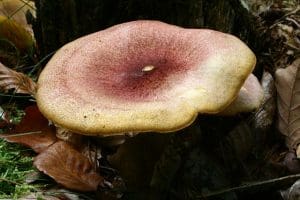
Stem:
A pale yellow colour but covered in tiny purple scales.
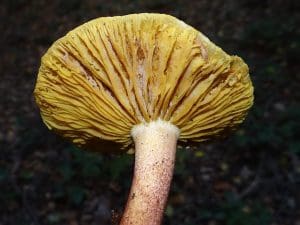
Gills:
This is where the custard part of the name becomes apparent. The gills are a custard yellow colour, crowded and adnate.
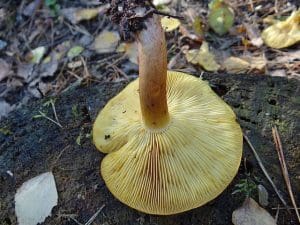

Smell:
A mild mushroom aroma.
Spores:
White to pale cream.
Uses
In food
Some guides books list them as edible but of poor quality, they are very bitter when raw. The common treatment states they should be boiled in water before frying and the taste then is like rotting wood, so best avoided.
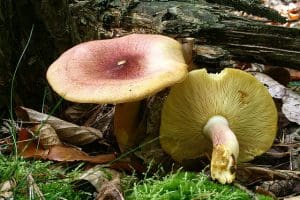
Known hazards
There are some reports of them causing gastrointestinal issues in some people so make sure to be wary.
Potential lookalikes
Prunes and Custard (Tricholomopsis Decora) is a related species that looks similar. This is much rarer and is more golden in colour.
A little more about it here



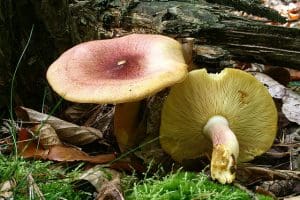
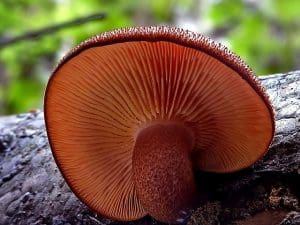




Leave a Reply
You must be logged in to post a comment.